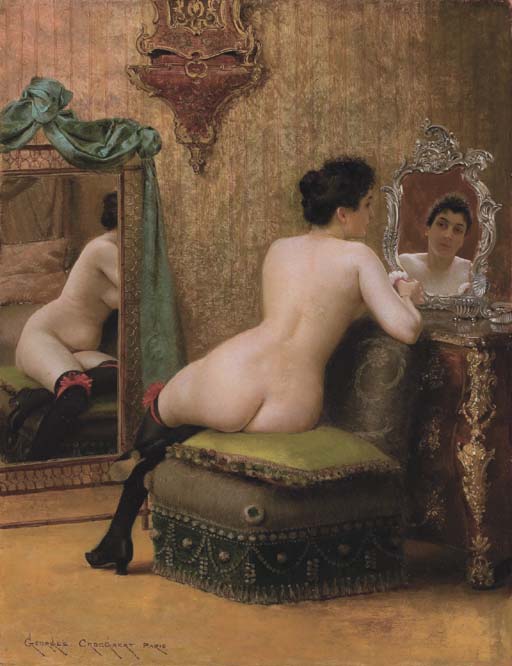
Georges Croegaert, a Belgian genre painter known for his charming depictions of elegant society in the late 19th century, was born on October 20, 1848, in Antwerp, Belgium. His artistic career unfolded against the backdrop of a rapidly changing Europe, marked by industrialization, urbanization, and a flourishing bourgeoisie. Croegaert’s paintings captured the opulence and social rituals of the time with meticulous detail and a touch of humor.
Little is known about Croegaert’s early life and education, but he likely received formal training in art, given the technical proficiency and stylistic finesse evident in his works. He exhibited at the Royal Academy in Antwerp, where he gained recognition for his skillful portrayal of the social milieu of the belle époque.
Chasing the elegant
Croegaert’s paintings primarily focused on scenes of the upper-middle-class and aristocratic society, depicting elegant ladies, gentlemen, and their luxurious surroundings. His keen observation and ability to convey the nuances of facial expressions and fashionable attire set him apart as a genre painter with a flair for capturing the spirit of his time.
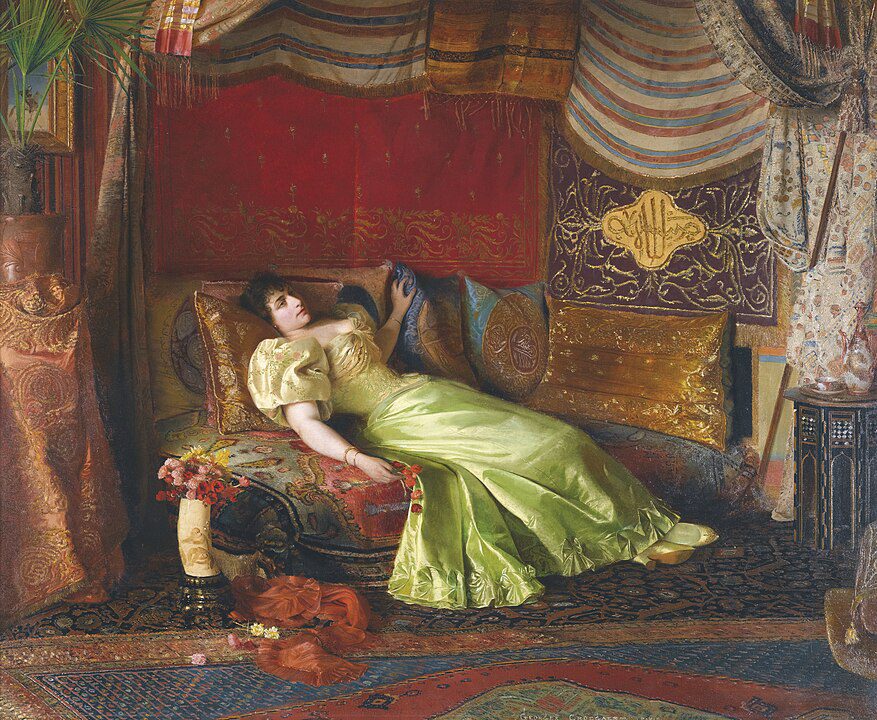
One of Croegaert’s recurring themes was the portrayal of women engaged in leisurely activities. Paintings like “Tea Time” (1880) and “Afternoon Tea” (1890) showcased his talent for depicting the rituals of social interaction, often highlighting the intricate details of fashionable attire and interior decor.
Rendering maestro
The artist’s technical skill extended to his ability to render various textures, including fabrics, jewels, and floral arrangements. This attention to detail, coupled with a vibrant color palette, contributed to the allure of Croegaert’s paintings. His works were not only visual feasts but also sociocultural commentaries on the values and customs of the time.
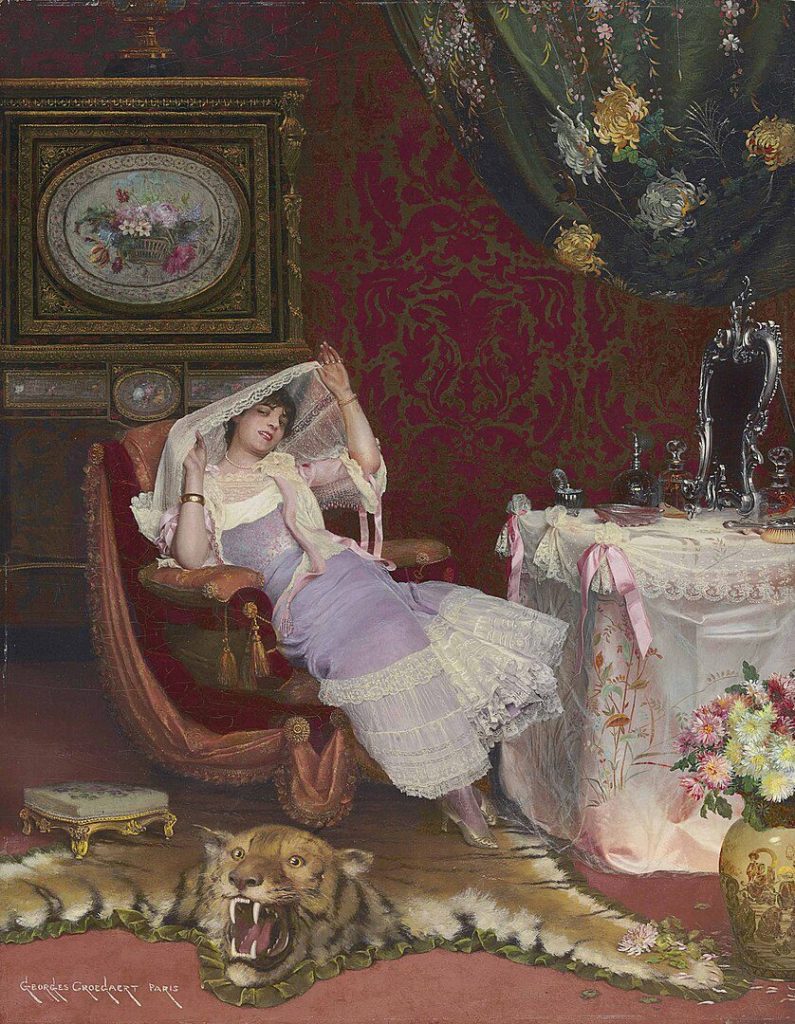
Croegaert’s paintings often featured humor and wit, adding a delightful dimension to his social commentary. In works like “The Connoisseurs” (1890) and “The Flirtation” (1893), he captured moments of playful interaction and lighthearted intrigue, inviting viewers to engage with the narratives unfolding within his canvases.
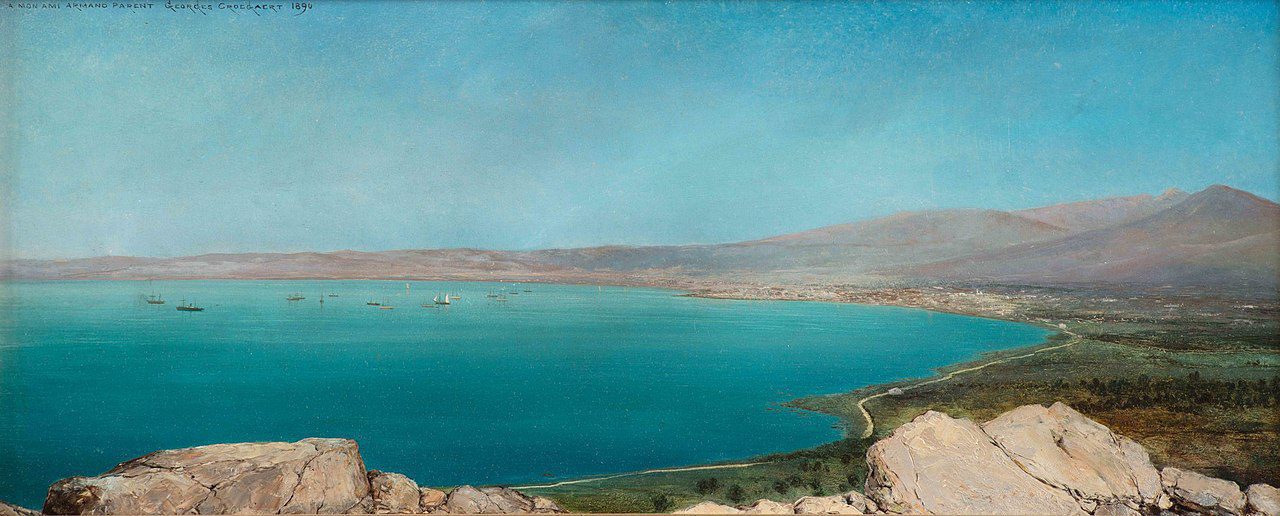
The artist’s success extended beyond Belgium, and he exhibited his works at major art salons in Paris, where his paintings were well-received by an international audience. Croegaert’s ability to evoke the charm and sophistication of the belle époque resonated with collectors and art enthusiasts alike.
Window to the past
Georges Croegaert’s paintings are characterized by a balance between technical precision and a certain lightheartedness, offering a glimpse into the world of European high society during the late 19th century. While his works may not delve into profound social critique, they serve as delightful snapshots of a bygone era, capturing the elegance, manners, and leisure pursuits of a privileged class.
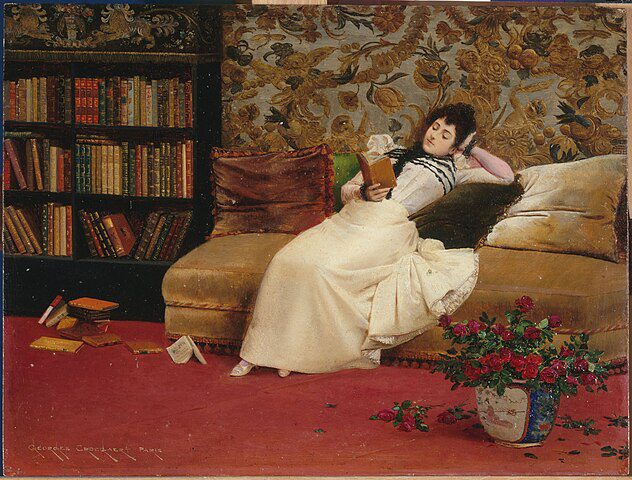
Georges Croegaert passed away on November 23, 1923, leaving behind a legacy of charming genre paintings that continue to captivate viewers and provide a window into the social and aesthetic sensibilities of the belle époque. His contribution to the genre painting tradition remains valued, and his works are appreciated for their technical finesse, cultural insight, and the joy they bring to those who encounter them.




